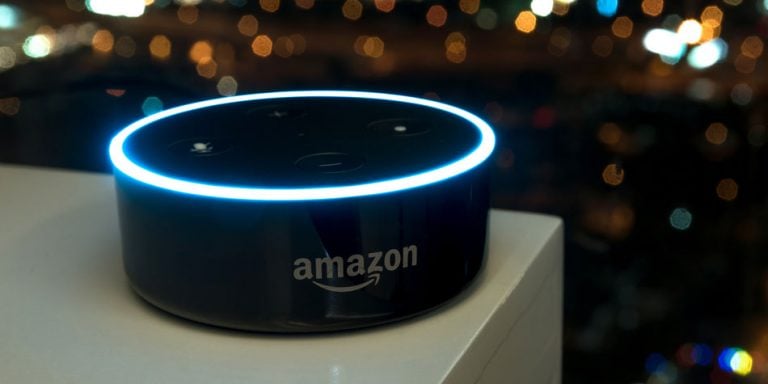Despite a chorus of long-running doubters, Amazon.com, Inc. (NASDAQ:AMZN) stock trades just off an all-time high. Even a steep valuation (80x 2019 consensus EPS estimates) hasn’t kept AMZN stock from gaining another 37% so far this year. But the coming price increase for the company’s Amazon Prime represents a key test for Amazon stock.
That might seem like an overreaction. Amazon is raising the cost of Amazon Prime by just $20 and not to all of its customers. Students are paying $10 more per year. The month-to-month price isn’t changing, and Amazon Prime also has a discounted option for customers receiving government assistance.
Meanwhile, this is a company valued at almost $800 billion. An incremental $20 per customer per year might be helpful but hardly seems game-changing from a fundamental perspective.
But the success of the price hike is more important than the numbers suggest. It goes to the potential success or failure of Amazon’s long-term strategy. And it will have the ability to strengthen or weaken the bull case for Amazon stock.
Does Amazon Prime Matter to Amazon Stock?
The Prime rate hike does matter, as dearly valued as AMZN already is. After all, the bull case for Amazon stock relies in large part on the idea that Amazon can expand its margins at some point, when it wants to. That’s the case I’ve made for some time.
With thin operating margins (3% in the first quarter of this year) simply taking some pricing and/or pulling back on investments could add a couple of hundred basis points to margins and as much as double earnings.
But the bear case for AMZN stock is that Amazon’s impressive top-line growth and market share is coming because of those margins. Amazon is “allowed” by the market to undercut everyone else on price because Amazon stock isn’t being valued on profits while Macy’s Inc (NYSE:M) and Walmart Inc (NYSE:WMT) are.
A Prime rate hike offers a test for both arguments. Sure, $20 a year might not sound like much, but bear in mind that the rate hike is pretty much free money.
Amazon disclosed in Q1 (for the first time) the size of its Prime customer base: over 100 million. Adding an average $10 per subscriber would add roughly $1 billion to Amazon’s annual operating profit – because there’s close to zero incremental cost involved. (It’s not a coincidence that Netflix, Inc. (NASDAQ:NFLX) has soared since it instituted its own price increase.)
In context, that’s a big number. On a GAAP basis, Amazon only generated $4 billion-plus in EBIT in 2017. The rate hike alone would add 50 basis points to the company’s operating margin. And it would be an example of the ability Amazon has, and will have over time, to step up its margins with seemingly small efforts.
What Happens to AMZN Stock If Prime Stumbles?
Again, the argument from AMZN bulls isn’t that earnings “don’t matter.” It’s that the reported numbers don’t reflect all, or most, of the company’s true earnings power. A smooth response to an Amazon Prime rate increase would only further that argument.
If, on the other hand, there’s any pushback to a rate hike, then the bearish argument gains some credence. If consumers are using Amazon just because it’s the cheapest (or has established a perception of being the cheapest), then margin expansion gets tougher. So does the growth required to support a ~$1,600 share price.
One poll suggested that could be the case, saying 59% of customers would not renew their Amazon Prime membership given the rate hike. I’m somewhat skeptical of those results (a small sample size of about 1,000 doesn’t help) but it is a data point in the bears’ favor.
If consumers do respond negatively, and Amazon reports that Prime subscribers have dropped, that’s a twofold concern for the company. First, Prime subscribers spend almost twice as much as non-subscribers. Secondly, Amazon would lose the high-margin fees those subscribers pay.
More broadly, that kind of response would undercut the bullish argument that Amazon is embedded in the life of U.S. consumers in particular. It would suggest that margin expansion won’t be as simple for Amazon as hoped. And it could mean for the first time in years that bears are right in arguing that Amazon stock is overvalued.
AMZN Still Looks Like a Buy
I’ve been consistently bullish on Amazon stock for some time now but at $1,600 I’ve admitted to a bit of caution after an absolutely massive run. And I do see a scenario where the sentiment toward AMZN stock could change.
Amazon hasn’t been quite the category-killer some have feared; stocks like W W Grainger Inc (NYSE:GWW) and O’Reilly Automotive Inc (NASDAQ:ORLY), among others, have rebounded after tanking on competitive fears.
Microsoft Corporation (NASDAQ:MSFT) and Alphabet Inc (NASDAQ:GOOGL,GOOG) are finally providing some real competition to Amazon Web Services.
I still think Amazon stock has a path to a trillion dollar market capitalization. But it will take some time – and perhaps a bumpy road. And if Amazon Prime stumbles at all, it may take a lot longer than Amazon bulls might hope.
As of this writing, Vince Martin has no positions in any securities mentioned.

